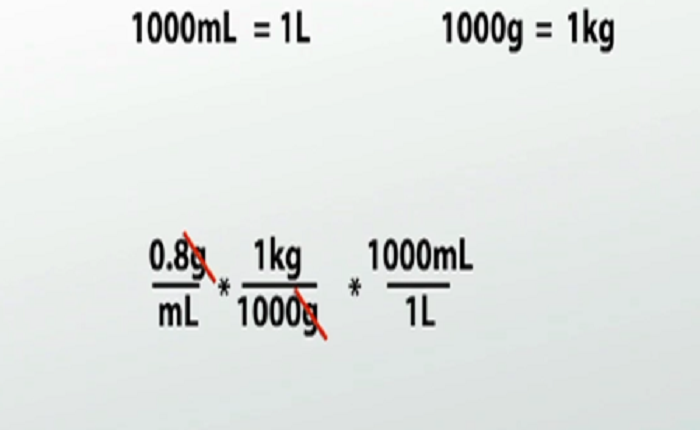Conversion from Milliliters to Liters (ml to l): A Comprehensive Guide

In the world of measurements, one of the most common conversions is from milliliters to liters (ml to l). Whether you’re working in the kitchen, performing scientific experiments, or handling medical doses, converting ml to l is a crucial skill. Understanding how to convert milliliters to liters allows you to manage liquid measurements accurately. In this blog post, we’ll break down the conversion process, provide practical examples, and explore the importance of this conversion in various fields.
What is the Milliliter (ml)?
Before diving into the ml to l conversion, it’s essential to understand what a milliliter is. The milliliter (ml) is a unit of volume in the metric system, equal to one-thousandth of a liter. Often used for small liquid quantities, milliliters are common in fields like cooking, medicine, and science, where precise measurements matter. Whether you are dealing with liquids or other substances, milliliters make it easy to measure small volumes efficiently.
What is the Liter (l)?
To fully grasp the ml to l conversion, we also need to define the liter. A liter (l) is a metric unit of volume equal to 1,000 milliliters. It is often used for measuring larger volumes of liquids, such as water, milk, or juice. The liter is commonly used in everyday life, especially in contexts where larger quantities are involved, such as packaging and industrial applications.
The Simple Formula for Converting ml to l
Converting ml to l is incredibly straightforward. The basic formula is:
Liters (l)=Milliliters (ml)1000\text{Liters (l)} = \frac{\text{Milliliters (ml)}}{1000}
This simple division by 1,000 is all you need to convert ml to l. For example, if you have 500 ml of water, divide 500 by 1,000 to get 0.5 liters. This formula is applicable to any situation where you need to convert milliliters to liters, making it easy to switch between the two units as needed.
Practical Applications of the ml to l Conversion
The ml to l conversion is useful in various practical scenarios. In cooking, for example, recipes might call for small liquid quantities in milliliters or larger volumes in liters, requiring you to convert between the two. Similarly, medical dosages are often given in milliliters, while intravenous (IV) fluids might be measured in liters. Understanding how to switch between ml and l ensures accurate measurement and dosing.
How to Use ml to l Conversion in Cooking
When preparing food, it’s common to encounter liquid ingredients measured in milliliters. Recipes might specify milliliters for ingredients like milk, oil, or water. In some cases, however, larger recipes or industrial cooking might require measurements in liters. By mastering the ml to l conversion, you can confidently scale recipes up or down and ensure precision in your cooking. For example, if a recipe calls for 2,000 ml of stock, knowing that it equates to 2 liters simplifies your preparation.
Converting ml to l in Scientific Experiments
In scientific experiments, precise liquid measurements are critical. Many laboratory procedures involve measuring chemicals, solutions, or other liquids in milliliters. However, larger experiments might require liters. The ability to convert ml to l ensures accuracy in the preparation of solutions, preventing errors that could affect the outcome of the experiment. For instance, converting 250 ml of a solution to 0.25 liters makes scaling the experiment much easier.
The Importance of ml to l Conversion in Medicine
In medicine, accurate dosage measurements can mean the difference between proper treatment and serious errors. Liquid medications are often prescribed in milliliters, while intravenous (IV) fluids are administered in liters. Nurses, doctors, and pharmacists frequently use ml to l conversion to ensure patients receive the correct amount of medication or hydration. Understanding the conversion is especially critical when administering large quantities of IV fluids, where liters are used, and dosages in milliliters need to be calculated.
Converting ml to l in Environmental Science
Environmental science often involves monitoring water consumption, pollutant levels, or chemical quantities in ecosystems. For large-scale projects like measuring the water level in lakes or rivers, liters are the preferred unit. However, smaller samples, such as water samples for testing pollutants, might be measured in milliliters. In this context, knowing how to convert ml to l is essential for accurate data reporting and analysis.
Common Mistakes in ml to l Conversion and How to Avoid Them
While the ml to l conversion is straightforward, mistakes can happen if you’re not careful. One common mistake is forgetting to divide by 1,000, leading to incorrect calculations. For example, converting 500 ml to liters without dividing by 1,000 would give you an incorrect volume of 500 liters instead of 0.5 liters. Another error is mistaking milliliters for microliters or centiliters. To avoid these mistakes, always double-check your units and calculations when converting ml to l.
Larger and Smaller Volume Conversions Related to ml and l
The ml to l conversion is part of a broader system of volume measurements. In the metric system, there are other units of volume smaller than milliliters (e.g., microliters) and larger than liters (e.g., kiloliters). Converting between these units often requires similar principles to the ml to l conversion. For example, to convert kiloliters to liters, you multiply by 1,000, just as you would divide by 1,000 to convert milliliters to liters.
Using ml to l Conversions in Industrial and Commercial Settings
In industrial and commercial settings, large quantities of liquids, such as oil, fuel, or chemicals, are often measured in liters. However, smaller measurements, such as those used in quality control or production testing, may be recorded in milliliters. For instance, during beverage manufacturing, ingredients like flavoring might be added in milliliters, while the final product is packaged in liters. Accurate ml to l conversion is critical to ensuring consistency in product formulation and packaging.
Tools and Technology for Automating ml to l Conversions
Advancements in technology have made it easier to perform ml to l conversions. Digital calculators, mobile apps, and conversion tools online allow you to quickly and accurately convert milliliters to liters without manual calculations. These tools are particularly useful in fields like medicine, science, and industry, where precision is key. For example, many laboratory instruments are designed to display both milliliters and liters, simplifying the conversion process.
Tips for Memorizing ml to l Conversion
While the formula for converting ml to l is simple, memorizing it can be helpful for those who frequently work with liquid measurements. One of the easiest ways to remember the conversion is to associate the prefix “milli-” with “one-thousandth.” Since “milli” means one-thousandth, you know that converting milliliters to liters involves dividing by 1,000. Additionally, practicing conversion with common measurements, such as 250 ml (0.25 l) or 500 ml (0.5 l), can help reinforce the concept.
The Role of ml to l Conversion in Everyday Life
Though we often take volume measurements for granted, the ml to l conversion plays a significant role in everyday life. From measuring beverages and cooking ingredients to understanding fuel consumption and environmental resources, the ability to convert ml to l is a fundamental skill. Whether you’re adjusting a recipe, filling up your car’s gas tank, or managing water usage, converting between milliliters and liters helps ensure accuracy in your daily activities.
Conclusion
Mastering the ml to l conversion is an essential skill that finds application in many areas of life, from cooking and medicine to science and industry. By understanding how to convert milliliters to liters using the simple formula of dividing by 1,000, you can ensure accurate measurements in any situation. With this guide, you’ve learned how to perform the conversion and explored its importance in various fields. Whether you’re dealing with small quantities of liquids or large volumes, the ml to l conversion is a fundamental tool for precision and accuracy.
FAQs
- How do you convert ml to l?
To convert milliliters (ml) to liters (l), divide the number of milliliters by 1,000. For example, 500 ml is equal to 0.5 liters. - Why is the ml to l conversion important?
The ml to l conversion is essential for ensuring accurate liquid measurements in various fields like cooking, science, medicine, and industry. - Is 1,000 ml the same as 1 liter?
Yes, 1,000 ml is equivalent to 1 liter, as 1 liter contains 1,000 milliliters. - Can I use the ml to l conversion in cooking?
Absolutely! The ml to l conversion is commonly used in cooking when recipes require precise measurements of liquids like water, oil, or milk. - What tools can I use to convert ml to l?
You can use digital calculators, mobile apps, and online conversion tools to quickly and accurately convert ml to l. Many kitchen and laboratory tools also feature built-in volume conversions.




